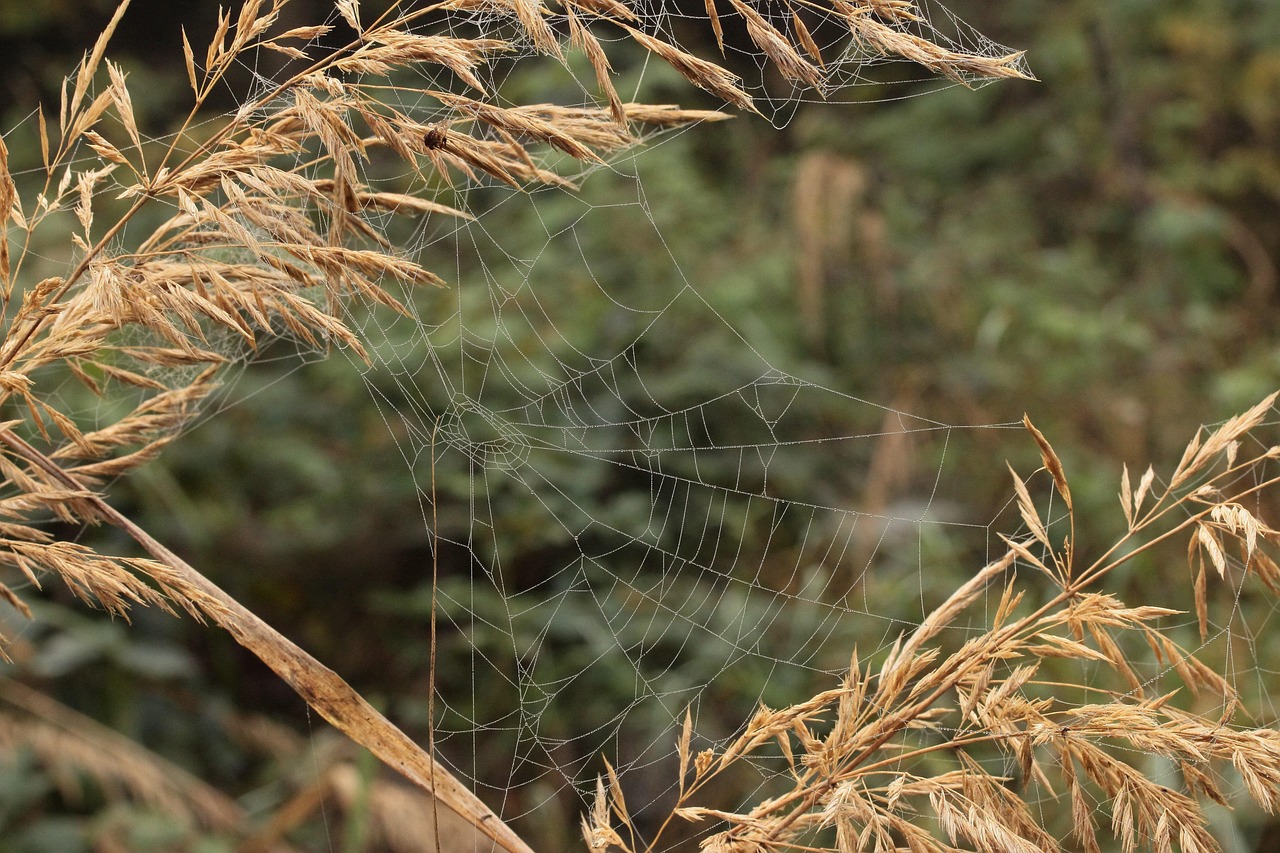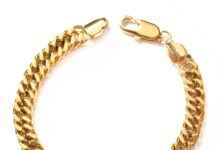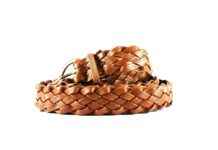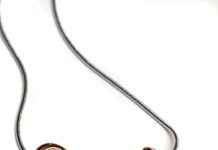This article delves into the fascinating history of hoop earrings, tracing their evolution across different eras and highlighting the cultural significance they embody in various societies worldwide.
Origins of Hoop Earrings
Hoop earrings boast a rich heritage that can be traced back thousands of years. Archaeological findings suggest that these earrings originated in ancient civilizations, where they were more than mere adornments; they represented status and identity.
Hoop Earrings in Ancient Civilizations
Throughout history, from the Egyptians to the Greeks, hoop earrings have held a significant place in personal adornment. In ancient societies, they were often associated with wealth and beauty.
- Hoop Earrings in Ancient Egypt
- Symbolism of Gold in Ancient Egypt
- Materials Used in Ancient Egyptian Earrings
- Hoop Earrings in Ancient Greece and Rome
In ancient Egypt, hoop earrings were symbols of wealth and power, frequently crafted from gold and embellished with precious stones.
Gold was revered as the skin of the gods, making gold hoop earrings particularly significant in both religious and cultural contexts.
Ancient jewelers showcased their skills by using various materials, including silver and gemstones, in their hoop earring designs.
In these ancient cultures, hoop earrings were popular among women, often symbolizing femininity and beauty.
The Evolution of Hoop Earrings Through the Ages
As time progressed, the designs and significance of hoop earrings transformed, adapting to the changing fashion trends and cultural contexts.
- Medieval and Renaissance Periods
- 19th Century and Victorian Influence
During these periods, hoop earrings experienced a revival, often featuring intricate designs and gemstones.
The Victorian era introduced new styles and materials, leading to a diverse array of hoop earring designs that reflected the fashion sensibilities of the time.
Modern Interpretations of Hoop Earrings
Today, hoop earrings are available in countless styles, sizes, and materials, solidifying their status as a staple accessory in contemporary fashion.
Hoop Earrings in Popular Culture
Hoop earrings have been embraced by various cultural movements and celebrities, symbolizing empowerment and self-expression.
Cultural Significance of Hoop Earrings
In many communities, hoop earrings carry profound cultural meanings, often representing heritage, identity, and pride.
- Hoop Earrings in Latin American Culture
- Hoop Earrings in African Traditions
In Latin American cultures, hoop earrings are closely linked to cultural identity, often worn as a celebration of heritage.
In various African cultures, these earrings hold significance in rituals and ceremonies, symbolizing femininity and beauty.
Conclusion: The Timeless Appeal of Hoop Earrings
Hoop earrings remain a beloved accessory, transcending time and culture, and continue to serve as a powerful symbol of beauty and identity across the globe.
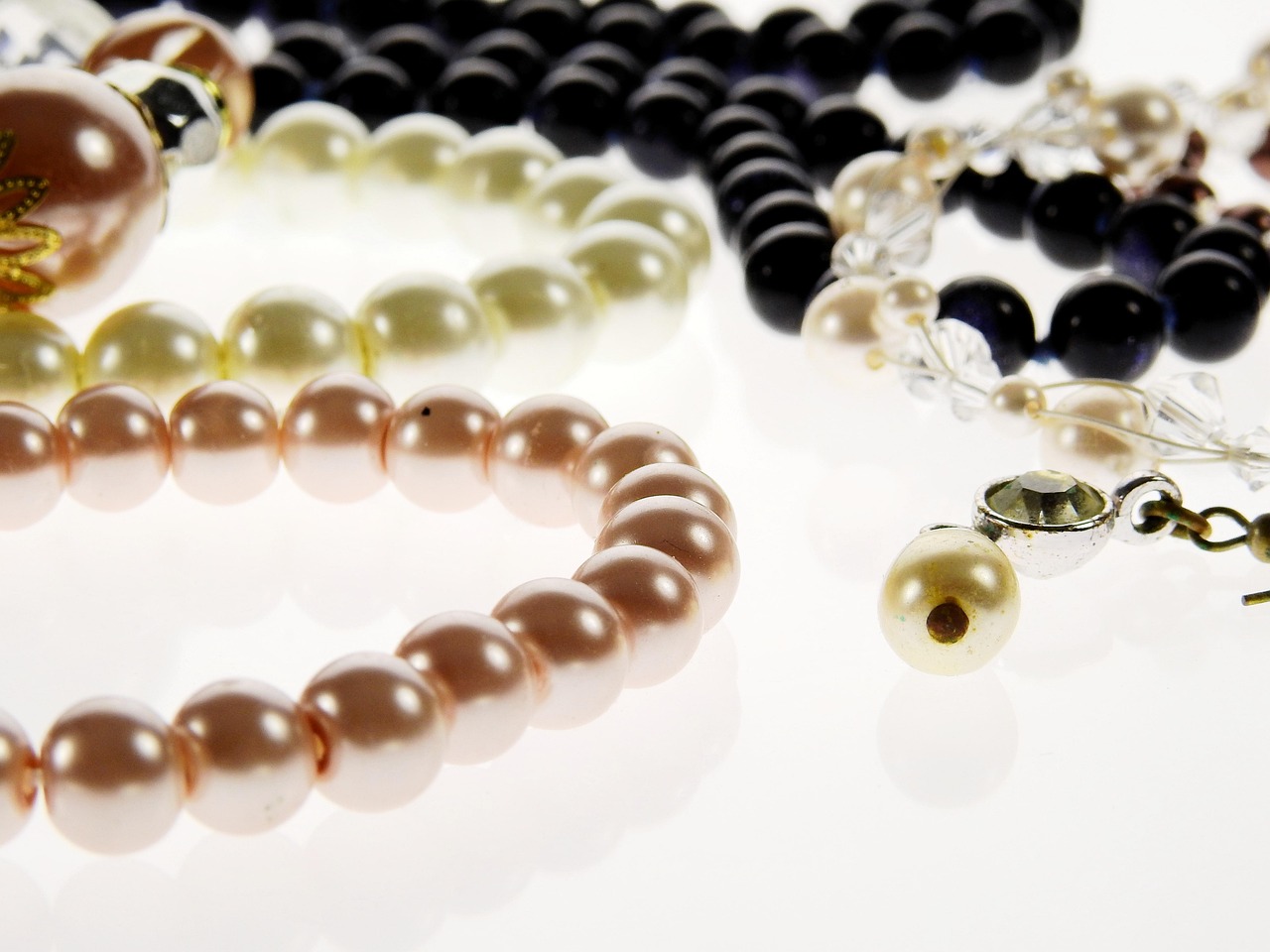
Origins of Hoop Earrings
Hoop earrings have a captivating history that spans thousands of years, with their roots found in various ancient cultures around the world. These timeless accessories have not only adorned ears but have also served as powerful symbols of status, identity, and cultural heritage.
The can be traced back to ancient civilizations such as the Egyptians, Greeks, and Romans. In these societies, hoop earrings were more than mere ornamental pieces; they were expressions of personal and social identity. Archaeological findings suggest that these earrings were crafted from a variety of materials, including gold, silver, and precious stones, reflecting the artistry and craftsmanship of the time.
In ancient Egypt, hoop earrings were often associated with the elite and were considered symbols of wealth and power. They were typically made from gold, a material that held great significance as it was believed to be the skin of the gods. This association made gold hoop earrings particularly important in religious and cultural contexts. Furthermore, the intricate designs often featured gemstones that showcased the skill of ancient jewelers.
As we move to ancient Greece and Rome, hoop earrings maintained their popularity, especially among women. They were seen as symbols of beauty and femininity, often worn during special occasions and ceremonies. The designs evolved, incorporating various artistic influences that reflected the changing tastes and values of society.
Throughout history, the evolution of hoop earrings has been marked by cultural shifts and fashion trends. From the medieval period, where they were embellished with intricate designs, to the Victorian era that introduced new styles, hoop earrings have continually adapted to reflect the times.
In conclusion, the origins of hoop earrings reveal a rich tapestry of cultural significance and artistic expression. Their enduring appeal lies in their ability to transcend time and fashion, making them a beloved accessory in modern society.
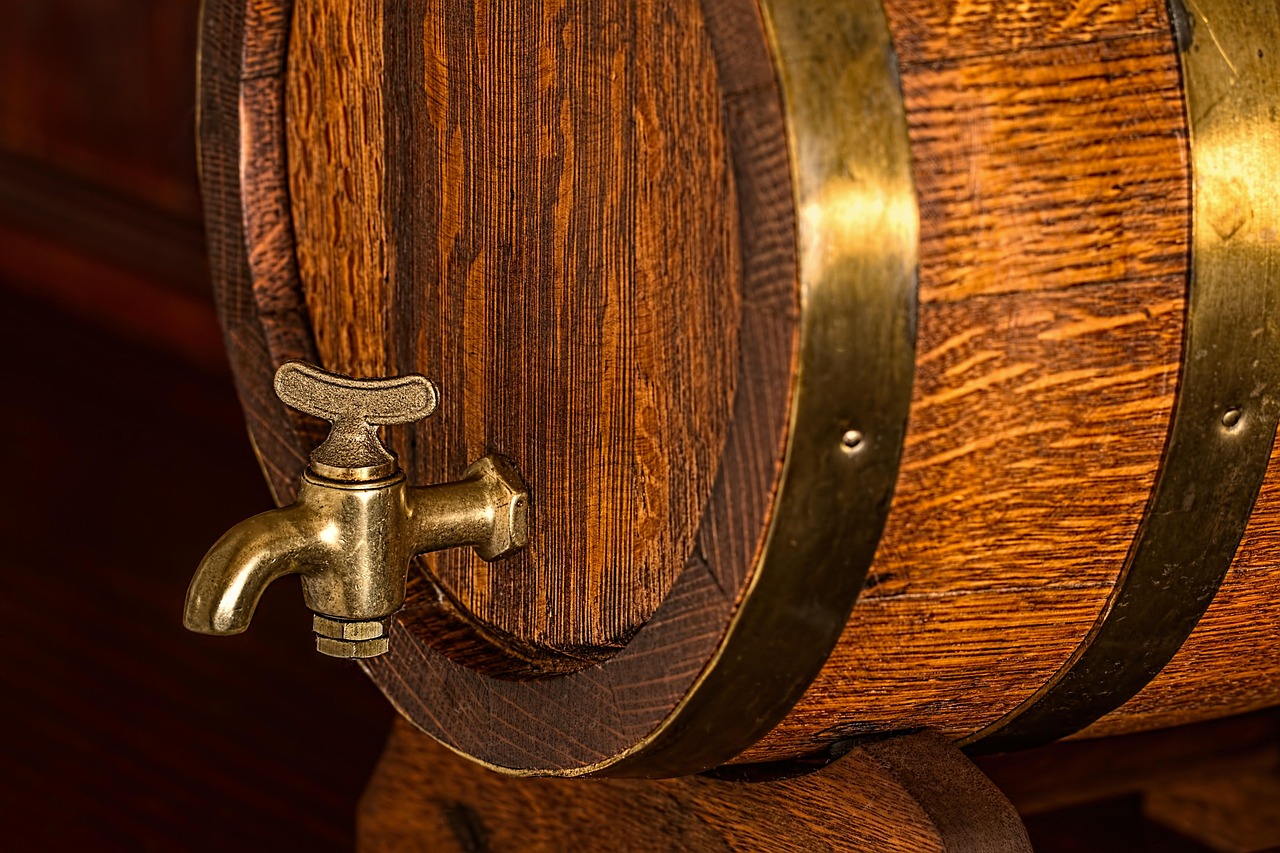
Hoop Earrings in Ancient Civilizations
Hoop earrings have a rich and vibrant history that spans various ancient civilizations, serving as a significant form of adornment that transcends mere fashion. From the early days of human civilization to the sophisticated cultures of the Egyptians and Greeks, these circular ornaments have played a crucial role in expressing status and identity.
In ancient societies, jewelry was not just about aesthetics; it was imbued with meaning and purpose. Hoop earrings, in particular, were often worn by individuals of high social standing. In ancient Egypt, these earrings were crafted from gold and adorned with precious stones, symbolizing wealth and divine favor. The Egyptians believed that wearing gold brought one closer to the gods, making these earrings a powerful statement of both earthly and spiritual significance.
Moving to ancient Greece, hoop earrings evolved in style and symbolism. They became popular among women, often associated with beauty and femininity. Greek women wore these earrings during various ceremonies, highlighting their importance in social and cultural events. The designs varied, with intricate patterns reflecting the artistry of the time, showcasing the skill of ancient jewelers.
Moreover, hoop earrings were not limited to the elite. They were also worn by common people, albeit in simpler forms, indicating that these accessories played a role in everyday life. This duality in their use highlights how hoop earrings bridged the gap between social classes, making them a universal symbol of adornment.
In summary, hoop earrings in ancient civilizations were more than just decorative pieces; they were significant markers of identity and status. Their evolution from the Egyptians to the Greeks illustrates their enduring appeal and cultural importance, a legacy that continues to influence fashion today.
Hoop Earrings in Ancient Egypt
Hoop earrings have been a significant element of adornment across various cultures, particularly in ancient Egypt. In this ancient civilization, hoop earrings were not merely decorative items; they were profound symbols of wealth and power. Crafted predominantly from gold, these earrings often featured intricate designs and were embellished with precious stones such as lapis lazuli, turquoise, and carnelian. The use of these luxurious materials indicated the social status of the wearer, making hoop earrings a visual representation of one’s affluence.
Moreover, the cultural significance of gold in ancient Egypt cannot be overstated. Gold was revered as the skin of the gods, symbolizing divinity and eternity. As such, wearing gold hoop earrings was not only a fashion statement but also a way to connect with the divine. These earrings were frequently worn by both men and women, reflecting their importance in society.
In addition to gold, ancient Egyptian jewelers utilized a variety of materials to craft hoop earrings. Silver and semi-precious gemstones were also popular, showcasing the remarkable craftsmanship and artistry of the time. The ability to create such beautiful pieces from these materials demonstrated the advanced skills of ancient artisans.
Furthermore, hoop earrings in ancient Egypt were often associated with religious rituals and ceremonies. They were worn during significant life events, such as marriages and funerals, symbolizing the wearer’s connection to their cultural heritage and spiritual beliefs. This multifaceted use of hoop earrings highlights their importance beyond mere adornment; they were integral to the identity and social fabric of ancient Egyptian life.
In conclusion, hoop earrings in ancient Egypt were much more than ornamental accessories. They were potent symbols of wealth, power, and spirituality, reflecting the values and beliefs of a civilization that continues to fascinate us today.
Symbolism of Gold in Ancient Egypt
In ancient Egypt, gold was not just a precious metal; it was revered as the very skin of the gods. This belief imbued gold with profound spiritual significance, making it a symbol of divinity, immortality, and eternal life. The ancient Egyptians associated gold with the sun god Ra, who was believed to have skin of gold, and thus, gold jewelry, including hoop earrings, was considered a direct connection to the divine.
Gold hoop earrings, in particular, held a special place in religious and cultural contexts. They were often worn by the elite and were thought to provide protection and favor from the gods. These earrings were not merely decorative; they were believed to carry magical properties that could ward off evil spirits and bring good fortune. The craftsmanship involved in creating these earrings was intricate, with artisans often incorporating symbols and motifs that represented various deities and beliefs.
Moreover, gold hoop earrings were frequently buried with the deceased, signifying their importance in the afterlife. This practice reflects the Egyptians’ belief in the continuity of existence beyond death, where such adornments were thought to assist in the journey to the afterlife. The use of gold in funerary contexts further emphasizes its revered status in society.
In addition to their spiritual significance, gold hoop earrings also served as indicators of social status. The size and embellishments of the earrings often reflected the wearer’s wealth and position within society. Those who could afford elaborate designs adorned with precious stones were seen as powerful and influential.
In conclusion, the symbolism of gold in ancient Egypt transcends mere aesthetics. It represents a complex interplay of religion, social hierarchy, and cultural identity. Gold hoop earrings are not just accessories; they are a testament to the rich history and beliefs of an ancient civilization that continues to captivate our imagination today.
Materials Used in Ancient Egyptian Earrings
Hoop earrings have captivated people for centuries, not only for their aesthetic appeal but also for their rich history and cultural significance. In ancient Egypt, these adornments were more than mere accessories; they were a testament to the craftsmanship and artistry of the jewelers of the time. The materials used in creating these earrings played a crucial role in their value and symbolism.
Silver and Gemstones in Ancient Egyptian Hoop Earrings
While gold was the most prized material in ancient Egyptian jewelry, silver also held significant importance. It was considered a precious metal and was often used in various forms of jewelry, including hoop earrings. The combination of gold and silver not only showcased the jeweler’s skill but also reflected the wealth and status of the wearer.
In addition to metals, gemstones were frequently incorporated into hoop earrings, enhancing their beauty and value. Stones such as lapis lazuli, turquoise, and carnelian were popular choices. These gemstones were believed to possess protective properties and were often associated with various deities. For instance, lapis lazuli was linked to the goddess Isis, symbolizing wisdom and protection.
The Craftsmanship of Ancient Jewelers
The artistry involved in creating hoop earrings was remarkable. Ancient jewelers employed techniques such as casting, engraving, and inlaying to produce intricate designs. Each piece was unique, often reflecting the personal style of the wearer or the cultural significance of the symbols depicted.
Moreover, the use of color in gemstones added another layer of meaning to these earrings. Colors were often symbolic, with blue representing the sky and the afterlife, while red signified protection and vitality. This thoughtful incorporation of materials and colors highlights the deep connection between jewelry and cultural beliefs in ancient Egypt.
In conclusion, the materials used in ancient Egyptian hoop earrings, including silver and various gemstones, not only showcased the exceptional craftsmanship of the era but also carried profound cultural significance. These earrings were more than decorative items; they were powerful symbols of identity, status, and spirituality.
Hoop Earrings in Ancient Greece and Rome
Hoop earrings have long been celebrated for their elegance and timeless appeal, particularly in ancient Greece and Rome. In these civilizations, hoop earrings were not merely decorative items; they were profound symbols of beauty and femininity. Women adorned themselves with these jewelry pieces to enhance their appearance and express their social status.
In ancient Greece, hoop earrings were crafted from various materials, including gold, silver, and bronze. The intricate designs often featured engravings or embellishments that highlighted the wearer’s wealth and taste. These earrings were typically worn during special occasions, such as weddings and festivals, where women showcased their beauty and grace.
Similarly, in ancient Rome, hoop earrings gained immense popularity among women of all social classes. They were often larger and more ornate than their Greek counterparts, reflecting the Roman penchant for grandeur. Empresses and noblewomen wore elaborate hoop earrings adorned with precious stones, which served as a testament to their high status and wealth.
Moreover, the cultural significance of hoop earrings extended beyond mere aesthetics. They were often associated with feminine virtues, such as beauty, love, and fertility. Women believed that wearing hoop earrings could enhance their allure and attract positive attention from suitors. This belief was deeply ingrained in the social fabric of both Greek and Roman societies.
In conclusion, hoop earrings in ancient Greece and Rome were more than just accessories; they were powerful symbols of identity and status. Their enduring legacy continues to influence modern fashion, reminding us of the timeless connection between jewelry and personal expression.
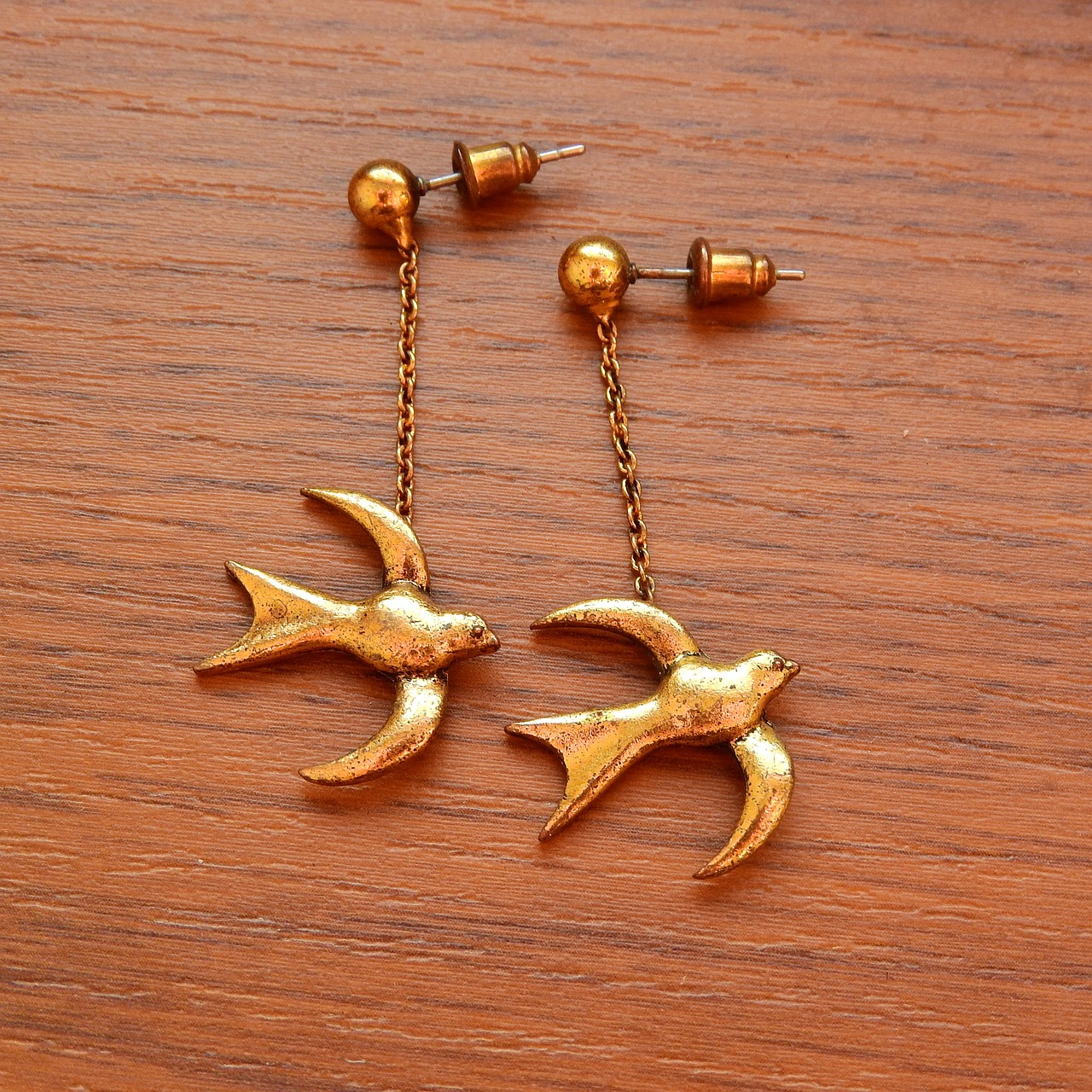
The Evolution of Hoop Earrings Through the Ages
Hoop earrings have a rich and varied history that reflects the changing tides of fashion, culture, and societal norms. Over the centuries, these iconic accessories have transformed in both design and significance, adapting to the preferences and values of different eras.
In ancient times, hoop earrings were not merely decorative items; they held deep cultural meanings. From the elegant designs of the Egyptians to the intricate styles favored by the Greeks and Romans, these earrings were often used to signify status and identity. For instance, in ancient Egypt, hoop earrings crafted from gold were seen as symbols of wealth and divine favor, while in Greece, they represented beauty and femininity.
As the medieval period approached, hoop earrings experienced a resurgence. They evolved into more elaborate forms, often embellished with gemstones and intricate designs that reflected the artistry of the time. This trend continued into the Renaissance, where hoop earrings became a staple in the wardrobes of the elite, showcasing not only wealth but also the evolving tastes in fashion.
The 19th century brought about yet another transformation in hoop earring design, particularly influenced by the Victorian era. New materials and styles emerged, leading to a diverse range of hoop earrings that catered to the changing fashion sensibilities of the time. The Victorian fascination with symbolism and meaning also influenced the designs, making them more than just accessories.
In contemporary fashion, hoop earrings have solidified their status as a timeless accessory. Today, they are available in various sizes, styles, and materials, appealing to a broad audience. From minimalist designs to oversized statement pieces, hoop earrings continue to evolve, reflecting modern trends while maintaining their historical significance.
In summary, the evolution of hoop earrings through the ages showcases their adaptability and enduring appeal. These accessories not only enhance personal style but also carry a rich history that resonates with cultural identity and individual expression.
Medieval and Renaissance Periods
During the medieval and Renaissance periods, hoop earrings experienced a remarkable revival, capturing the imagination of artisans and fashion enthusiasts alike. This era was characterized by a flourishing of the arts and a renewed interest in personal adornment, which led to the creation of hoop earrings that were not only functional but also visually stunning.
Hoop earrings from this time were often elaborately designed, featuring intricate patterns that reflected the craftsmanship of the period. Jewelers experimented with various techniques, incorporating filigree work, engraving, and enameling to enhance the beauty of these accessories. Additionally, gemstones such as pearls, emeralds, and rubies were frequently used to embellish hoop earrings, showcasing the wealth and status of the wearer.
The social significance of hoop earrings during the medieval and Renaissance periods cannot be overstated. They were often worn by women of nobility and wealth, symbolizing not only fashion but also power and influence. As trade routes expanded, the availability of precious materials increased, leading to an even greater variety of styles and designs. This accessibility allowed hoop earrings to transcend social classes, becoming popular among various demographics.
Moreover, the cultural context of the time played a significant role in the evolution of hoop earrings. They were often featured in portraiture and literature, further embedding them into the fabric of society. Artists and writers of the time celebrated their beauty, and hoop earrings became a symbol of the feminine mystique.
In conclusion, the medieval and Renaissance periods were pivotal in the history of hoop earrings. Their intricate designs, use of precious materials, and cultural significance have left a lasting legacy that continues to influence modern jewelry design.
19th Century and Victorian Influence
The 19th century marked a significant turning point in the world of fashion, particularly during the Victorian era, which spanned from 1837 to 1901. This period was characterized by a distinctive style that embraced ornate designs and luxurious materials, leading to a remarkable evolution in hoop earring designs. The Victorian influence on jewelry was profound, with hoop earrings becoming a popular accessory among women, reflecting both personal style and societal norms.
During this time, hoop earrings were often crafted from a variety of materials, including gold, silver, and even less expensive metals for the working class. The use of gemstones and intricate embellishments became commonplace, showcasing the craftsmanship and artistry of the jewelers of the time. Designs ranged from simple and elegant to elaborate pieces adorned with pearls, diamonds, and colored gemstones, reflecting the wearer’s social status and taste.
In addition to aesthetics, hoop earrings in the Victorian era also held symbolic significance. They were often associated with femininity and grace, embodying the ideals of beauty prevalent in Victorian society. Women wore these earrings not only as a fashion statement but also as a representation of their identity and status within the community.
| Material | Description |
|---|---|
| Gold | Symbol of wealth and luxury, often used in elaborate designs. |
| Silver | More accessible than gold, used for both simple and ornate styles. |
| Gemstones | Added color and uniqueness, often chosen to match the wearer’s outfit. |
Moreover, the Victorian era also saw the emergence of new techniques in jewelry making, such as filigree and engraving, which added depth and detail to hoop earrings. This innovation allowed for greater creativity, resulting in unique pieces that were both fashionable and meaningful.
In conclusion, the 19th century and the Victorian era played a crucial role in shaping the design and cultural significance of hoop earrings. Their evolution during this period not only reflected the fashion sensibilities of the time but also highlighted the social dynamics and values of Victorian society.

Modern Interpretations of Hoop Earrings
Hoop earrings have undergone a remarkable transformation in contemporary fashion, evolving into a versatile accessory that caters to various tastes and styles. Today, they are not only a symbol of elegance but also a reflection of personal identity and cultural heritage.
The modern interpretations of hoop earrings are as diverse as the individuals who wear them. From minimalist designs that appeal to those who prefer a subtle look, to bold, oversized hoops that make a statement, the options are virtually limitless. These earrings are crafted from a variety of materials, including gold, silver, acrylic, and even wood, allowing for a wide range of price points and styles.
- Classic Gold Hoops: Timeless and elegant, these are a staple in many jewelry collections.
- Colorful Acrylic Hoops: Perfect for adding a pop of color to any outfit, these are popular among younger generations.
- Textured and Patterned Hoops: Unique designs that showcase creativity and individuality.
- Statement Hoops: Large and eye-catching, these earrings are often worn to express confidence and style.
Moreover, hoop earrings have been embraced by various cultural movements and celebrities, further solidifying their place in modern fashion. They are often seen as a symbol of empowerment, allowing wearers to express themselves freely and confidently. In recent years, many fashion influencers and celebrities have been spotted wearing hoop earrings, reinforcing their status as a fashion essential.
In conclusion, the modern interpretations of hoop earrings reflect a blend of tradition and innovation. As they continue to evolve, these earrings remain a timeless accessory that resonates with people across different cultures and generations, proving that their appeal is truly universal.
Hoop Earrings in Popular Culture
Hoop earrings have transcended their origins to become a significant part of popular culture. Their journey through time reflects not only changing fashion trends but also broader cultural movements that emphasize empowerment and self-expression.
Throughout the decades, hoop earrings have been adopted by various artists, musicians, and public figures, becoming a symbol of identity for many. In the 1980s and 1990s, hip-hop culture played a crucial role in popularizing these accessories. Artists like Salt-N-Pepa and Jennifer Lopez donned oversized hoops, which became synonymous with their bold and confident personas.
Moreover, hoop earrings have been embraced by celebrities across different genres, from film to fashion. Icons such as Beyoncé and Rihanna have incorporated hoops into their signature styles, showcasing their versatility and ability to complement a wide range of outfits. This visibility in the media has contributed to their status as a fashion staple.
In addition to their aesthetic appeal, hoop earrings carry deeper meanings within various communities. For many, they represent a connection to cultural heritage and a celebration of feminine strength. In Latin American cultures, for instance, wearing hoop earrings can signify pride in one’s roots, while in African traditions, they often symbolize beauty and femininity.
As contemporary fashion continues to evolve, hoop earrings remain relevant, adapting to new styles and trends. Designers are now experimenting with different sizes, materials, and embellishments, ensuring that these timeless accessories appeal to new generations.
In conclusion, hoop earrings are more than just a fashion accessory; they are a powerful symbol of empowerment, identity, and self-expression. Their enduring presence in popular culture highlights their significance across various communities and their ability to resonate with individuals on a personal level.

Cultural Significance of Hoop Earrings
Hoop earrings are more than just a fashion accessory; they carry profound cultural significance in various communities around the globe. Throughout history, these circular ornaments have been emblematic of heritage, identity, and pride, serving as a means of self-expression and a connection to one’s roots.
In many cultures, hoop earrings are not merely decorative items. They are often worn during significant life events, such as weddings, coming-of-age ceremonies, and cultural festivals. For instance, in Latin American cultures, these earrings are frequently associated with cultural identity and are a celebration of rich traditions and ancestry. Women wear them as a statement of pride in their roots, showcasing their connection to their heritage.
Similarly, in numerous African communities, hoop earrings symbolize not just beauty, but also femininity and strength. They are often integral to various rituals and ceremonies, representing a woman’s status and her ties to her family and community. The size and style of the hoops can convey messages about the wearer’s social standing or marital status, further emphasizing their importance beyond mere aesthetics.
In contemporary society, hoop earrings have transcended their traditional roles. They have been embraced by various cultural movements and are frequently worn by celebrities and influencers as symbols of empowerment and self-expression. This modern interpretation highlights the versatility of hoop earrings, allowing them to adapt to changing fashion trends while maintaining their cultural significance.
In conclusion, hoop earrings are a timeless accessory that encapsulates the essence of cultural identity and pride. Their rich history and evolving significance across different societies underscore their role as more than just jewelry; they are a powerful representation of who we are and where we come from.
Hoop Earrings in Latin American Culture
Hoop earrings, known as aretes de aros in Spanish, hold a special place in the cultural tapestry of Latin America. These earrings are not merely fashion accessories; they are deeply intertwined with the cultural identity and heritage of various communities across the region. In many Latin American cultures, wearing hoop earrings is a celebration of ancestry and a symbol of pride.
Historically, hoop earrings have been worn by women of all ages, often passed down through generations as family heirlooms. They serve as a connection to tradition and are often worn during significant cultural events, such as festivals and family gatherings. The act of wearing these earrings can evoke a sense of belonging and community, reinforcing the ties to one’s roots.
In addition to their aesthetic appeal, hoop earrings are often imbued with symbolic meanings. For many, they represent femininity, strength, and resilience. The circular shape of the earrings can symbolize the continuity of life and the cyclical nature of existence, which is a prevalent theme in many indigenous cultures.
Moreover, the materials and designs of hoop earrings can vary significantly between different regions and communities. For instance, in some areas, they may be adorned with intricate beadwork or colorful threads, reflecting local artistic traditions. In contrast, others may opt for more minimalist designs, showcasing the beauty of the metal itself.
As Latin American cultures continue to evolve, so too do the interpretations of hoop earrings. They have been embraced by contemporary fashion, often seen on runways and in popular media, which further enhances their status as a cultural icon. This evolution signifies not only a shift in fashion trends but also a broader acceptance and celebration of cultural diversity.
In conclusion, hoop earrings in Latin American culture are more than just adornments; they are a profound expression of identity, heritage, and community. Whether worn for everyday use or special occasions, they remain a cherished symbol of the rich cultural narratives that define the region.
Hoop Earrings in African Traditions
Hoop earrings hold a special place in many African cultures, serving as more than just decorative accessories. They are deeply embedded in the fabric of various rituals and ceremonies, symbolizing femininity, beauty, and cultural identity.
In numerous African communities, hoop earrings are often worn during significant life events such as weddings, initiation rites, and celebrations. These earrings are not merely fashion statements; they represent a woman’s status and her connection to her heritage. For instance, in some cultures, the size and design of the hoop can indicate a woman’s marital status or her family’s wealth.
Furthermore, hoop earrings are often incorporated into traditional attire, enhancing the overall aesthetic and conveying a sense of pride in one’s cultural background. The act of wearing these earrings can also serve as a ritualistic practice, where the earrings are blessed or imbued with spiritual significance before being worn.
- Symbol of Femininity: Hoop earrings are frequently associated with the feminine ideal, celebrating the beauty and strength of women.
- Cultural Identity: They play a crucial role in expressing one’s cultural heritage, often passed down through generations.
- Ritual Significance: In some communities, the act of wearing hoop earrings is part of a larger ceremonial practice that marks important life transitions.
In conclusion, hoop earrings in African traditions are much more than simple adornments. They encapsulate a rich tapestry of cultural meanings, reflecting the values, beliefs, and aesthetics of the communities that cherish them. As they continue to evolve, these earrings remain a powerful symbol of identity and beauty across the continent.
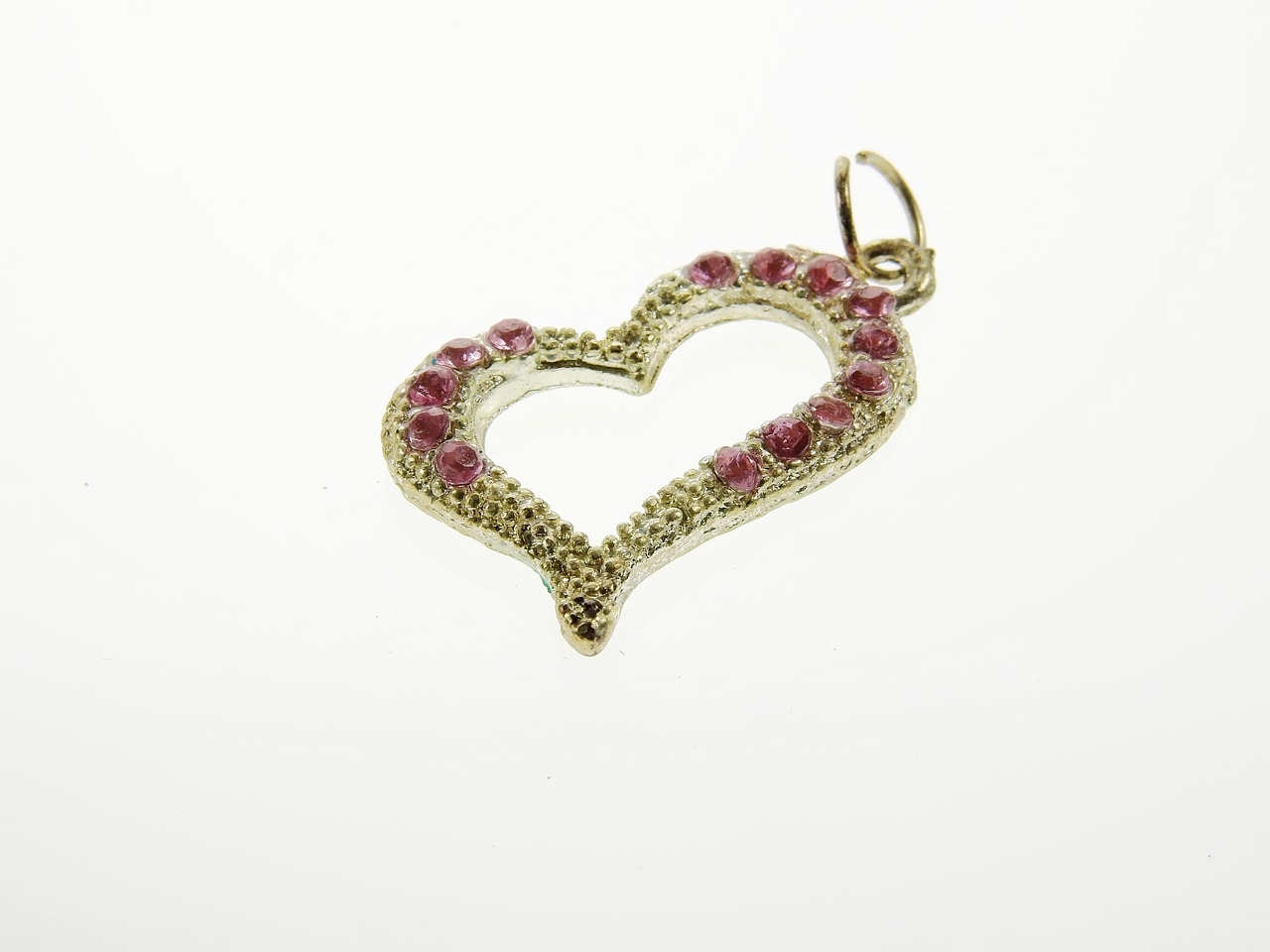
Conclusion: The Timeless Appeal of Hoop Earrings
Hoop earrings have long been cherished as a timeless accessory, transcending various eras and cultures. Their enduring appeal lies not only in their aesthetic beauty but also in the rich history and cultural significance they embody. From ancient civilizations to modern fashion, hoop earrings have evolved while remaining a powerful symbol of identity and self-expression.
The journey of hoop earrings can be traced back thousands of years, with their origins found in ancient societies such as Egypt and Greece. In these cultures, hoop earrings were often associated with wealth and status, frequently crafted from precious metals and adorned with gemstones. As time progressed, these earrings adapted to the changing fashion trends, reflecting the evolving roles of women in society.
During the medieval and Renaissance periods, hoop earrings experienced a resurgence in popularity, featuring intricate designs that showcased the craftsmanship of the era. The Victorian period brought about further innovation, introducing new materials and styles that catered to the tastes of the time.
In contemporary fashion, hoop earrings have become a staple accessory, available in a wide variety of styles, sizes, and materials. They have been embraced by celebrities and cultural movements, symbolizing empowerment and individuality. This adaptability has allowed hoop earrings to remain relevant and cherished across generations.
Moreover, the cultural significance of hoop earrings cannot be overlooked. In many communities, they represent heritage and pride, particularly in Latin American and African cultures, where they are often worn during important rituals and celebrations.
In conclusion, hoop earrings are more than just a fashion accessory; they are a celebration of beauty and identity. Their rich history and cultural significance ensure that they will continue to be a beloved choice for generations to come.
Frequently Asked Questions
- What are hoop earrings made of?
Hoop earrings can be crafted from a variety of materials, including gold, silver, platinum, and even plastic or wood. The choice of material often reflects personal style and cultural significance.
- How have hoop earrings evolved over time?
Hoop earrings have transformed significantly through the ages. From ancient civilizations where they symbolized wealth and power, to modern interpretations that embrace diverse styles and sizes, these earrings have adapted to reflect changing fashion trends.
- What cultural significance do hoop earrings hold?
In many cultures, hoop earrings represent heritage and identity. For instance, in Latin American cultures, they celebrate cultural roots, while in African traditions, they symbolize femininity and are often used in rituals.
- Are hoop earrings suitable for all occasions?
Absolutely! Hoop earrings come in various sizes and designs, making them versatile enough for both casual and formal occasions. Whether you’re dressing up for a party or going for a laid-back look, there’s a pair for every moment.
- How do I care for my hoop earrings?
To keep your hoop earrings looking their best, gently clean them with a soft cloth after wearing. Avoid exposure to harsh chemicals and store them in a cool, dry place to prevent tarnishing and damage.

